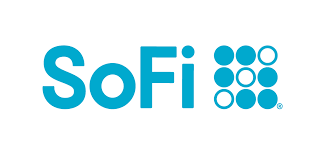Why You Shouldn't Pay With Points at Checkout
Many retailers are starting to offer the option to use your credit card rewards at checkout. But is it a good idea?
The ability to redeem your credit card rewards right from a retailer's checkout page is becoming increasingly more common across the web. Amazon.com, in particular, seems to have deals with multiple card issuers that let you redeem your points or cash back to pay for items during the checkout process.
However, as tempting as it may be to click a few buttons and get your Amazon order without spending a dime, think twice before paying with credit card rewards. Here are a few things to keep in mind the next time you consider paying with points at checkout.
You probably won't get the best per-point value
The obvious reason to avoid redeeming your credit card rewards directly with a retailer is that you may not be getting a good value for those points. In most cases, you'll receive a flat rate of $0.01 per point when you redeem at checkout -- and some issuers may offer even less -- which is not exactly a high-value redemption.
For instance, if you have a travel rewards card, you'll typically get the most value by redeeming miles for travel through your issuer's rewards portal or by transferring them to a hotel or airline partner. This can yield impressive returns, with some redemptions scoring a per-point value of $0.04 or more.
You won't earn rewards on your purchase
Another great reason to avoid using your points at a retailer is less obvious but no less important: opportunity cost. By using your rewards, rather than your rewards credit card, you'll lose out on any cash back or points you may have earned by using your card to pay for the purchase.
So even if you're not concerned about a low redemption value -- say, if you have a cash back card -- you'll still likely come out a little behind by missing out on rewards you could have earned. A better option is to redeem your cash back rewards as a statement credit. That way, you'll still be using your rewards to pay for your purchase (albeit indirectly), and you'll also earn new rewards that you can apply to a future purchase.
Is paying with points ever a good idea?
As with most rules, this one does come with some exceptions, the most prominent being hotel and airline rewards. The entire reason to earn hotel and airline rewards is to redeem them directly for hotel stays or flights when purchasing your tickets. (You'll still want to do a bit of math before you redeem these rewards to make sure you're getting a decent value. Not all travel redemptions are worthwhile.)
For regular rewards credit cards, the best time to pay with points at checkout is when you can earn a major discount by redeeming a few points. For example, American Express regularly offers a deal for a 40% discount on an Amazon purchase if you use Membership Rewards points to pay for part of your purchase.
The trick to getting the most out of special discounts, like those from Amex, is to read the entire offer to see how many points you must use to activate the deal. In the case of the typical offer from Amex, you only need to use a single Membership Rewards point to unlock the discount, making it easily worth the loss you'll take on the value of that one point.
Another time to consider paying with points is when you really don't have another option. Times are tough for many of us right now, and those old credit card rewards could help you afford the essentials. While you should certainly look into other redemption options that could yield a better return (like redeeming cash back for a statement credit), using your points at checkout could be a good way to save a few bucks when you need to most.
Our Research Expert
We're firm believers in the Golden Rule, which is why editorial opinions are ours alone and have not been previously reviewed, approved, or endorsed by included advertisers. Motley Fool Money does not cover all offers on the market. Motley Fool Money is 100% owned and operated by The Motley Fool. Our knowledgeable team of personal finance editors and analysts are employed by The Motley Fool and held to the same set of publishing standards and editorial integrity while maintaining professional separation from the analysts and editors on other Motley Fool brands. Terms may apply to offers listed on this page.



